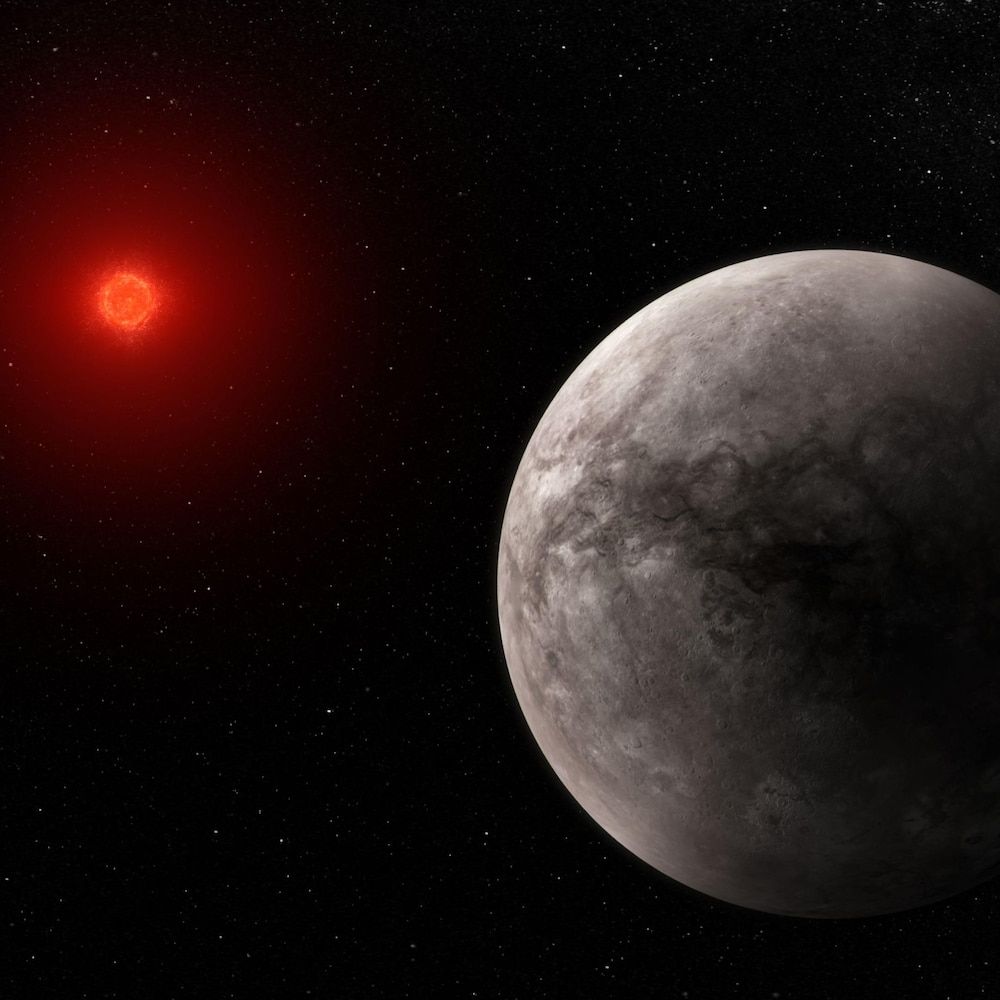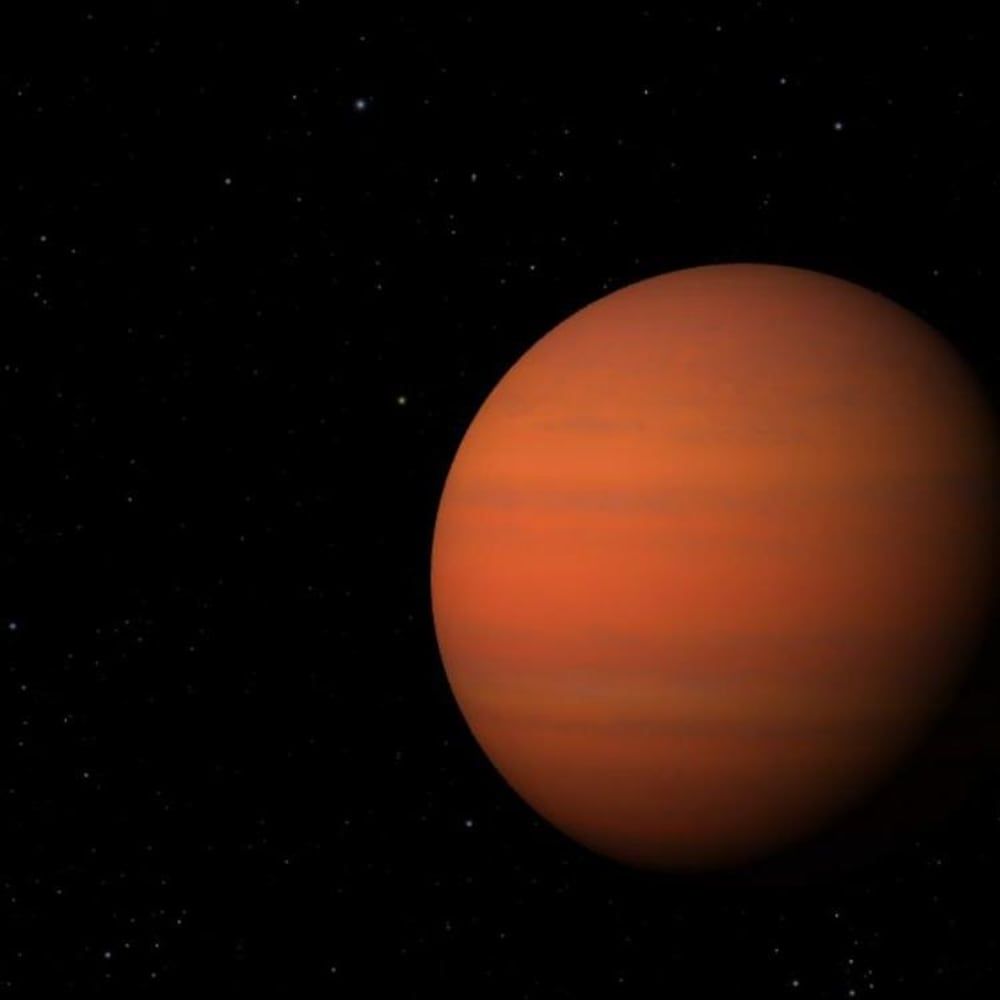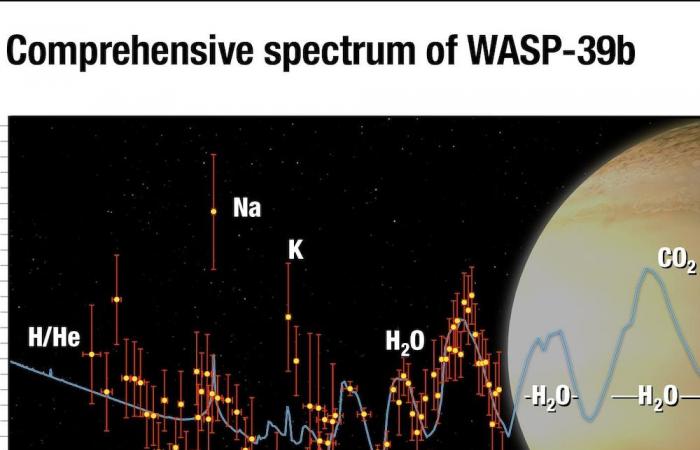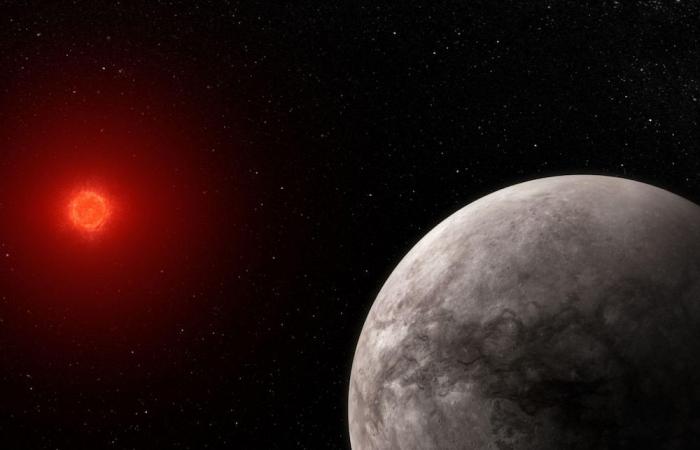Unlike other telescopes, James Webb was not created to find exoplanets, but to study those that have been detected. The first two years of his mission were fruitful for the scientists.
Atoms, molecules, signs of chemical reactions and clouds. Components present in the atmosphere of the exoplanet WASP-39 b have been identified by astrophysicist Björn Benneke from iREx and Canadian colleagues.
It is the very first exoplanet whose atmosphere has been studied in detail.
notes Nathalie Ouellette.
Other elements were also detected in WASP-39 b’s atmosphere such as sodium and potassium, confirming previous observations made with space and ground telescopes. Carbon monoxide was also detected.
Among the revelations is the first detection in an exoplanetary atmosphere of sulfur dioxide, a molecule produced from chemical reactions triggered by ultraviolet light from the planet’s parent star. This type of process, called photochemistry, had never before been observed outside the solar system.
The planet WASP-39 b, first detected in 2011, orbits a Sun-like star located 700 light-years from Earth.
TRAPPIST-1 b and its ghost signals

The TRAPPIST-1 system has attracted the attention of scientists since the discovery of its seven Earth-sized exoplanets in 2016.
The research team led by Olivia Lim from iREx studied the atmosphere of the planet TRAPPIST-1 b, which revealed some previously unknown properties. But this work above all made it possible to note stellar contamination in the data obtained.
if it is possible– when the time comes to analyze the data collected, particularly when the signal comes from an exoplanet passing in front of its star, as in the case of TRAPPIST-1 b”,”text”:”The high precision of the telescope presents a disadvantage – if it is possible – when the time comes to analyze the data collected, particularly when the signal comes from an exoplanet passing in front of its star, as in the case of TRAPPIST-1 b”}}”>The high precision of the telescope presents a disadvantage – if it is possible – when the time comes to analyze the data collected, particularly when the signal comes from an exoplanet passing in front of its star, as in the case of TRAPPIST-1 b
remarks Nathalie Ouellette.
« These phantom signals become an issue that we must learn to control when we process and model our data to obtain results. »
Stellar contamination is attributable to the star’s own characteristics. You should know that just like our Sun, stars do not have a uniform surface. They have dark spots and other brighter regions, which can create signals that mimic certain atmospheric attributes of a planet.
Thus, to properly determine the atmospheric composition of an exoplanet, researchers believe that it is necessary to simultaneously model the planetary atmosphere and the particularities of its star.
We see that the nature of the star changes the signal we receive. We must therefore understand how the spots and flares of the star can influence the transit of light in the atmosphere of an exoplanet.
explains the astrophysicist.
For this reason, further observations will be necessary to better understand this planet.
See directly the light emitted by WASP18 b
For the first time, scientists have succeeded in analyzing the thermal emission of an exoplanet, which corresponds to the direct emission of its light.
« It’s not just the light from its star that can be seen through the exoplanet’s atmosphere. You can actually see its light directly. »
An international team of researchers, including Louis-Philippe Coulombe of iREx and his colleagues, has discovered new details about this ultra-hot Jupiter-like planet, whose temperature exceeds 1725 degrees Celsius. According to current knowledge, it turns out that the sunlit side of the exoplanet captures heat in a way that is still unknown.
HAT-P-18 b, its atmosphere and its star

Astronomer Marie Lou Fournier Tondreau and her colleagues at iRex have analyzed the composition of the atmosphere of the planet HAT-P-18 b and have once again detected the presence of stellar contamination.
HAT-P-18 b is a planet located more than 500 light-years away. Its mass is similar to that of Saturn, but its size is closer to that of Jupiter, which is larger. It therefore has a bloated atmosphere which lends itself particularly well to analysis.
indicates Nathalie Ouellette.
« During the transit in front of its star, we saw a strange little bump in the light curve. According to our models, it would have passed in front of a starspot that would have caused the peculiar signal. »
An earlier analysis of the same data carried out by an American team led to a clear detection of water and CO2 in the atmosphere of HAT-P-18 b, but also to the discovery of indications of methane.
The iRex team, which took into account for the first time the characteristics of the surface of the star and the atmosphere of the planet, obtained different results. The latter do not confirm the presence of methane and show a concentration of water 10 times lower than that found previously.









